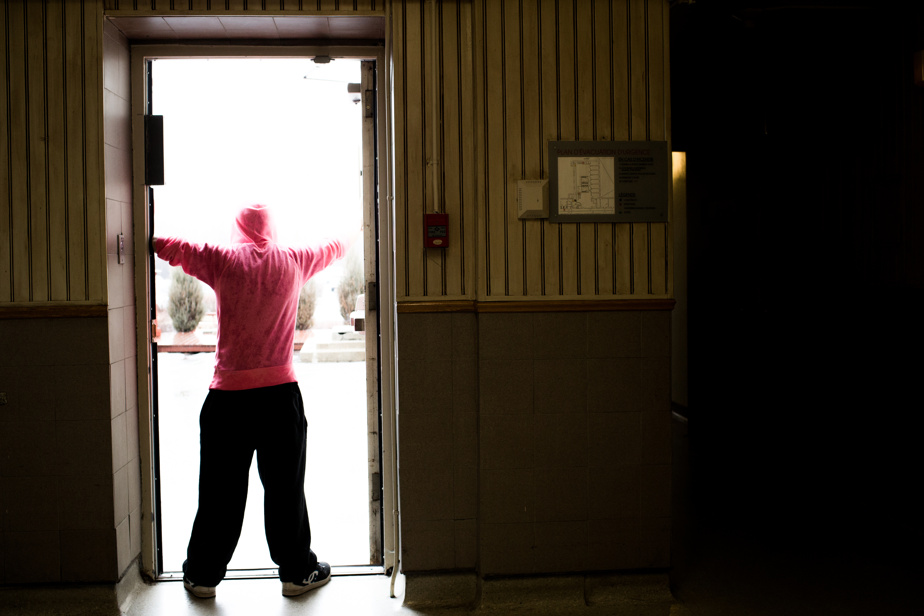Almost three years after the publication of the Laurent report which analyzed the youth protection system, new data show that a third of young people who have been placed under the supervision of the DPJ find themselves, at the age of 21, in a sort of professional cul-de-sac, being neither in studies, nor in training, nor at work. This is three times more than in the general population at the same age.
The Study on the Future of Placed Youth (EDJEP)1 studied from every angle, for years, a cohort of 1136 young people from the DPJ. Its researchers met these young people up to three times during and after their journey in social services, and derived a series of data which paint a portrait of the future of these young people, 2000 of whom leave the DPJ resources each year. And this portrait is far from rosy.
The EDJEP showed us that the journey of one in five placed young people was chaotic, with more than nine placement settings. At the age of 19, less than a quarter of these young people had managed to obtain their high school diploma, compared to 80% in the regular population. Less than one in ten (7%) access post-secondary training. One in five experienced at least one episode of homelessness after placement.
A unique portrait
However, a new study from the Quebec Youth Research Network Chair uses data collected by the EDJEP to examine the employment situation among young formerly placed people. The researchers Martin Goyette, professor at the National School of Public Administration, Maria Eugenia Longo, professor at the National Institute of Scientific Research and chair holder, as well as Marie Dumollard, assistant professor at the school of social work of the University of Montreal, compared the situation of young people who come from the DPJ to that of a regular population, using figures from the Ministry of Employment and Social Solidarity. We also met 30 of these young ex-placed people, in order to collect their experiences, to bring a more “qualitative” facet to the study.
Such a portrait is completely new, notes researcher Martin Goyette. “It has never been done in Quebec. »
First observation: at the age of 21, 43% of young formerly placed people work full time, “in jobs characterized by low graduation requirements, low salaries and little protection,” note the researchers.
The majority of them work in retail (45% of young people working at the age of 19 and 27% at 21) and in restaurants (21% of young people working at the age of 19 and 18). % at age 21).
Still at the age of 21, nearly one in five (18%) is working and studying, and one in ten is studying only.

However, a proportion of them have significant difficulty finding their way professionally. From the age of 19, 28% of the cohort followed by the EDJEP already finds itself in the situation of being neither in studies, nor in training, nor in work (NEEF category). Two years later, at age 21, this figure is more or less stable, at 27%.
Heartbreaking testimonies
Testimonies from young people collected in the discussion group are heartbreaking. “Some jobs refused me because I was in a youth center. Some people, when they learned that I was in the center, well, it was like: unfortunately you are not suitable for the position. You are a former problem person, we don’t want problems here,” says Jeanne, 23 years old. The same young woman said she had a very difficult experience when her boss revealed to her colleagues that she had been an escort.
Unsurprisingly, young people who do not have a secondary school diploma (DES) are strongly represented in this proportion of young people who are experiencing significant difficulties. At the age of 21, young ex-placed people who do not have DES are five times more likely to find themselves in the NEEF category. “In short, schooling is a very important element in stabilizing their career,” says Martin Goyette.
Even among young people who say they have a job, the journey has clearly not been easy, since at the age of 19, a fifth of them say they have used social assistance since the end of placement. This proportion rises to 29% at the age of 21.
“This illustrates the significant level of instability and professional precariousness,” note the researchers.
“These young formerly placed people discover the strong injunction of employment when they come of age, while certain issues, such as education or employment, are not resolved,” summarizes Maria Eugenia Longo.
Additional obstacles
Other obstacles complicate the path of young ex-placed people. When housing is precarious, employment suffers: those who have experienced an episode of homelessness are twice as likely to find themselves in the NEEF category. “Residential insecurity constitutes an important issue which blocks several processes of schooling, access and retention in employment,” say the researchers.
These young people who find themselves in the NEEF category also had more mental disorders than other young people their age. Nearly one in three (29%) received 11 psychiatric services or more, show data collected by researchers in the databases of the Régie de l’assurance- santé du Québec. They received on average three times more psychiatric services than young people their age.
What can be done to prevent these young people from finding themselves in such a professional dead end? Researchers are exploring several possible solutions, the first of which is to provide much more solid support for the education of young people in the DPJ. We also need to support these young people in a more sustained and sustainable way in employability programs. And this support, the researchers emphasize, should imperatively continue after reaching the age of majority.
1. Consult theStudy on the future of young people in care. Wave 1 Summary Report
